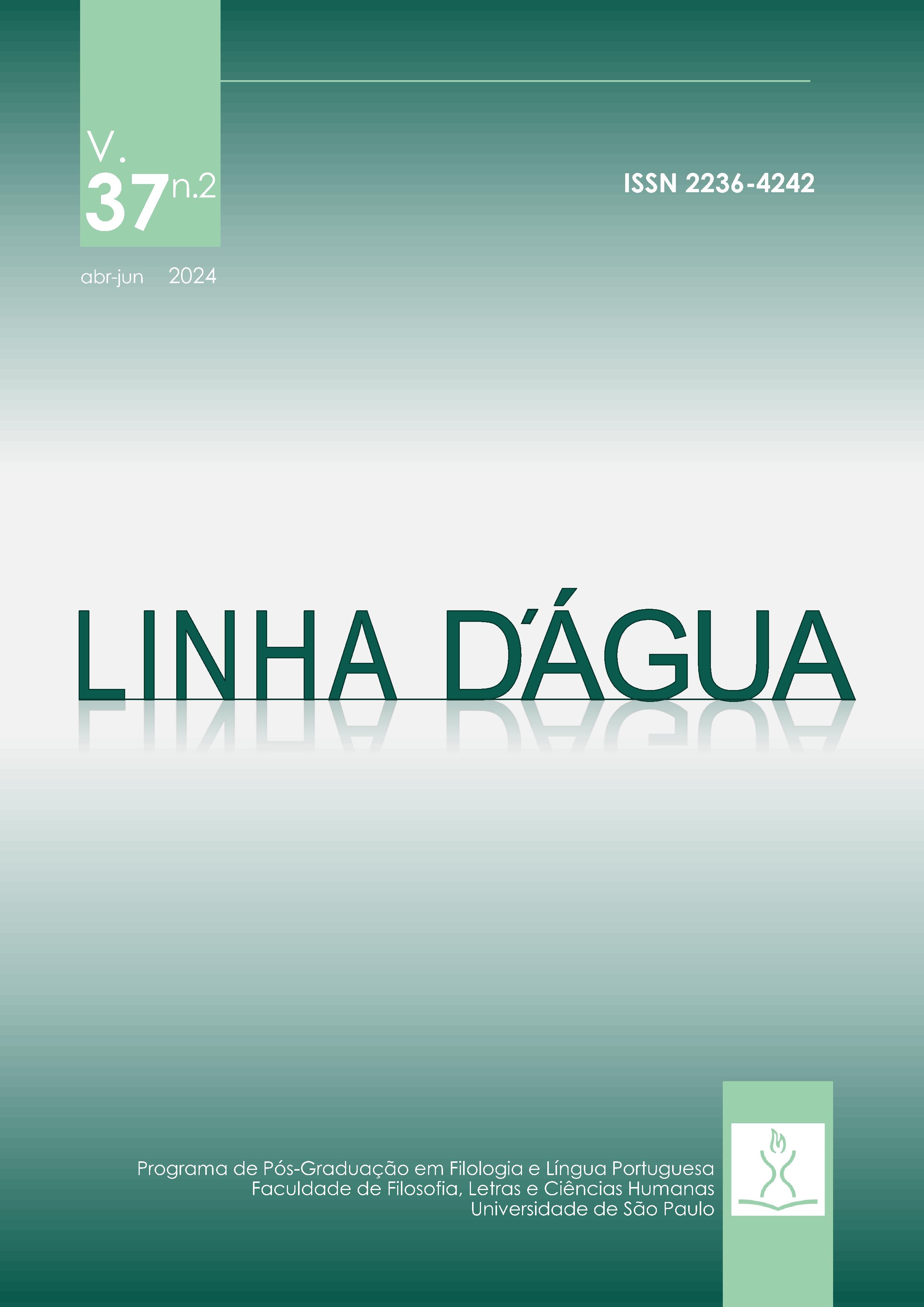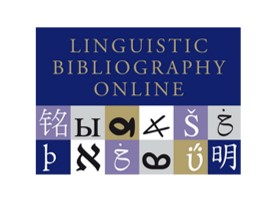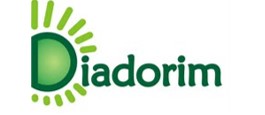With all my heart thanks to health literacy: language and rhetoric in Portuguese cardiovascular health media campaigns
DOI:
https://doi.org/10.11606/issn.2236-4242.v37i2p184-210Keywords:
Language, Image, Health Literacy, Cardiovascular Health, Media CampaignAbstract
This article focuses on the use of language and rhetoric in cardiovascular health media campaigns conducted by Portuguese cardiology organizations committed to health literacy, focusing on the content (“what”) and form (“how”) of the message. Thematic analysis and rhetorical analysis were applied to a corpus of ten posters (2018-2023). The results show that pathos tends to elicit various reactions (e.g., alarm, motivation to act, fear, guilt, concern) that could instigate action. The logos is built from, for example, discursive devices (e.g., use of questions, selection of colors for connotative purposes, descriptions of concepts, isotopy) and stylistic devices, contributing to more effective understanding and use of information. Health literacy principles are present in the message.
Downloads
References
ALTHEIDE, D. L. Ethnographic content analysis. In: LEWIS-BECK, M.S.; BRYMAN, A.; LIAO, T.F. (Eds.), The Sage encyclopedia of social science research methods, 3 vols. Thousand Oaks, CA: Sage, 2004, p. 325-326.
American Heart Association (AHA). Life’s simple 7, 2020. Disponível em: https://playbook.heart.org/lifes-simple-7/. Acesso em: 27 maio 2024.
ARISTÓTELES. Retórica. Lisboa: Imprensa Nacional-Casa da Moeda, 2005.
ARKIN, E. B. Analysis of high blood pressure target audience and message test reports, 1978-1986. Bethesda, MD: National Heart, Lung, and Blood Institute, 1987.
ATKIN, C.K.; RICE, R.E. Theory and principles of public communication campaigns. In: RICE, R.E.; ATKIN, C.K. (Eds.), Public communication campaigns. Thousand Oaks: Sage, 2013, p. 3-20.
BARIK, A.L.; PURWANINGTYAS, R.A.; ASTUTI, D. The Effectiveness of Traditional Media (Leaflet and Poster) to Promote Health in a Community Setting in the Digital Era: A Systematic Review. Jurnal Ners, vol. 14, n. 3si, p. 76-80, 2019. DOI: http://dx.doi.org/10.20473/jn.v14i3(si).16988.
BELIM, C., & LAGIDO, S. Géneros e formatos televisivos da comunicação em saúde na televisão: O talk show Diga Doutor. Revista Mediterránea De Comunicación, vol. 12, n. 2, 2021, p. 301-319. DOI: https://doi.org/10.14198/MEDCOM.19870.
BELIM, C.; VAZ DE ALMEIDA. Health communication on models and practices in interpersonal and media contexts: emerging research and opportunities. Hershey: IGI Global, 2022.
BELLICHA, T.; MCGRATH, J. Mass media approaches to reducing cardiovascular disease risk. Public Health Reports, vol. 105, n. 3, 1990, p. 245-252.
BERWICK, D.M. Era 3 for medicine and health care. JAMA, vol. 315, n. 13, p. 1329-1330, 2016. DOI: https://doi.org/10.1001/jama.2016.1509.
BRUNER, J. Acts of meaning. Cambridge, MA: Harvard University Press, 1990.
BRYMAN, A. Social research methods. New York: Oxford University Press, 2012.
CASTELLANO, J.M.; NARULA, J.; CASTILLO, J.; FUSTER, V. Promoting cardiovascular health worldwide: Strategies, challenges, and opportunities. Revista Española de Cardiología, vol. 67, n. 9, 2014, p. 724-730. DOI: https://doi.org/10.1016/j.rec.2014.01.023.
CENTERS FOR DISEASE CONTROL AND PREVENTION. Simply put: A guide for creating easy-to-understand materials. Atlanta, Georgia: CDC, 2009
CORBETT, E. Classical rhetoric. In: RIVKIN, J.; RYAN, M. (Eds.), Literary theory, an anthology. Maiden: Blackwell Publishing, 2004, p. 142-161.
DICKINSON, J.K.; GUZMAN, S. J.; MARYNIUK, M.D.; O’BRIAN, C.A.; KADOHIRO, J.K.; JACKSON, R.A., D’HONDT, N.; MONTGOMERY, B.; CLOSE, K.L.; FUNNELL, M.M. The Use of Language in Diabetes Care and Education. Diabetes Care 1, vol. 40, n. 12, 2017, p. 1790–1799. DOI: https://doi.org/10.2337/dci17-0041.
DYSART-GALE, D. Techne, technology, and disenchantment in the wind in The Wind in the Willows. In HORNE, J.C.; WHITE, D.R. (Eds.), Kenneth Grahame’s The Wind in the Willows: A children’s classic at 100. Lanham: Scarecrow Press, 2010.
EL REFAIE, E. Visual metaphor and embodiment in graphic illness narratives. Oxford: Oxford University Press, 2019.
FISHER, W.R. Human communication as narration: Toward a philosophy of reason, value, and action. Columbia, SC: University of South Carolina Press, 1987.
GREEN, S. A rhetorical theory of diffusion. Academy of Management Review, vol. 29, n. 4, 2004, p. 653-669. DOI: https://doi.org/10.5465/AMR.2004.14497653.
GUAN, M.; MONAHAN, J., Positive affect related to health and risk messaging. Oxford Research Encyclopedias, 2017. DOI: https://doi.org/10.1093/acrefore/9780190228613.013.268.
HARTELIUS, E.; BROWNING, L. The application of rhetorical theory in managerial research. Management Communication Quarterly, vol. 22, n. 1, 2008, p. 13-39. DOI: https://doi.org/10.1177/0893318908318513.
HO, S.S.; YEE, A.Z.H. Presumed media influence in health and risk messaging. Oxford Research Encyclopedias, 2017.DOI: https://doi.org/10.1093/acrefore/9780190228613.013.294.
HOLT, R.; MACPHERSON, A. Sensemaking, rhetoric and the socially competent entrepreneur. International Small Business Journal, vol. 28, n. 1, 2010, p. 20-42. DOI: https://doi.org/10.1177/0266242609350822.
LANCAROTTE, I.; NOBRE, M.R. Primordial and primary prevention programs for cardiovascular diseases: From risk assessment through risk communication to risk reduction. A review of the literature. Clinics, vol. 71, n. 11, 2016, p. 667-678. DOI: https://doi.org/10.6061/clinics/2016(11)09.
LATIMER, A.E.; RIVERS, S.E.; RENCH, T.A.; KATULAK, N.A.; HICKS, A.; HODOROWSKI, J.K. ...; SALOVEY, P. A field experiment testing the utility of regulatory fit messages for promoting physical activity. Journal of Experimental Social Psychology, vol. 44, n. 3, 2008, p. 826-832. DOI: https://doi.org/10.1016/j.jesp.2007.07.013.
LONG, T.; TAUBENHEIM, A.M.; WAYMAN, J.; TEMPLE, S.; RUOFF, B.A. The Heart Truth: Using the Power of Branding and Social Marketing to Increase Awareness of Heart Disease in Women. Social Marketing Quarterly, vol. 14, n. 3, 2008 3–29. DOI: https://doi.org/10.1080/15245000802279334.
MAGNANI, J.W.; MUJAHID, M.S.; ARONOW, H.D.; CENÉ, C. W.; DICKSON, V.V.; HAVRANEK, E.; MORGENSTERN, L.B.; PAASCHE-ORLOW, M.K.; POLLAK, A.; WILLEY, J.Z.; American Heart Association Council on Epidemiology and Prevention; Council on Cardiovascular Disease in the Young; Council on Cardiovascular and Stroke Nursing; Council on Peripheral Vascular Disease; Council on Quality of Care and Outcomes Research; and Stroke Council. Health Literacy and Cardiovascular Disease: Fundamental Relevance to Primary and Secondary Prevention: A Scientific Statement From the American Heart Association. Circulation, vol. 138, n. 2, 2018, e48–e74. DOI: https://doi.org/10.1161/CIR.0000000000000579.
MONAHAN, J.L. Thinking positively: Using positive affect when designing health messages. In: MAIBACH, E.W.; PARROTT, R.L. Designing health messages: Approaches from communication theory and public health practice. Thousand Oaks: Sage, 1995, p. 81-90.
MURRAY-JOHNSON, L.; WITTE, K. Looking toward the future: Health message design strategies. In THOMPSON, T.; DORSEY, A.; MILLER, K.; PARROTT, R. (Eds.), Handbook of health communication. New Jersey: Lawrence Erlbaum Associates, 2003, p. 473-495.
NAI, R.L. Emotional flow in persuasive health messages. Health Communication, vol. 30, n. 2, 2014, p. 114-124. DOI: https://doi.org/10.1080/10410236.2014.974129.
NUNES, J.M. Reflexões de um médico de família a propósito do curso de literacia em saúde: Modelos, estratégias e intervenção. In: LOPES, C.; VAZ DE ALMEIDA, C. (Coords.). Literacia em saúde na prática. Lisboa: Edições ISPA, 2019, p. 33-41.
NUTBEAM, D. Health promotion glossary. Health Promotion International, vol. 13, n. 4, p. 349-364, 1998. DOI: https://doi.org/10.1093/heapro/13.4.349.
O’DONOHUE, W. Clinical psychology and the philosophy of sci¬ence. Switzerland: Springer, 2013.
O’KEEFE, D.J. Message generalizations that support evidence-based persuasive message design: Specifying the evidentiary requirements. Health Communication, vol. 30, n. 2, 2014, p. 106-113. DOI: https://doi.org/10.1080/10410236.2014.974123.
OGLI, S.Y.T. The importance of language in society. International Journal of Academic Multidisciplinary Research (IJAMR), vol. 4, n. 10, p. 116-118, 2020.
PAVLIK, J.V.; FINNEGAN, J.R., Jr.; STRICKLAND, D.; SALMON, C.T.; VISWANATH, K.; WACKMAN, D.B. Increasing public understanding of heart disease: An analysis of data from the Minnesota Heart Health Program. Health Communication, vol. 5, n. 1, 1993, p. 1-20. DOI: https://doi.org/10.1207/s15327027hc0501_1.
PFEFFER, I. Regulatory fit messages and physical activity motivation. Journal of Sport & Exercise Psychology, vol. 35, n. 2, 2013, p. 119-131. DOI: https://doi.org/10.1123/jsep.35.2.119.
REZAI, L.S.; CHIN, J.; BASSETT-GUNTER, R.; BURNS, C. Developing persuasive health messages for a behavior-change-support-system that promotes physical activity. In: Proceedings of the 2017 International Symposium on Human Factors and Ergonomics in Health Care. Santa Monica, CA: Human Factors and Ergonomics Society, 2017, p. 89-95.
SALEEBEY, D. The strengths perspective in social work practice: extensions and cautions. Soc Work, vol. 41, n. 3, p. 296-305, 1996.
SCHMIDT, D.J. Between word and image: Heidegger, Klee, and Gadamer on gesture and genesis. Bloomington: Indiana University Press, 2012.
SHARF, B. Physician-patient communication as interpersonal rethoric: A narrative approach. Health Communication, vol. 2, n. 4, 1990, p. 217-231. DOI: https://doi.org/10.1207/s15327027hc0204_2.
SHARF, B.; VANDERFORD, M. Illness narratives and the social construction of health. In T. THOMPSON, A.; DORSEY, K.; MILLER; PARROTT, R. (Eds.), Handbook of health communication. New Jersey: Lawrence Erlbaum Associates, 2003, p. 9-34.
SIC NOTÍCIAS. O que dizem os peritos sobre a orientação clínica no pós-enfarte, 2023. Disponível em: https://sicnoticias.pt/webstories/o-que-dizem-os-peritos-sobre-a-orientacaoo-clinica-no-pos-enfarte. Acesso em: 27 maio 2024.
SIC NOTÍCIAS; LUSA. A cada 15 minutos, morre uma pessoa por doença cardiovascular em Portugal, 2023. Disponível em: https://sicnoticias.pt/saude-e-bem-estar/2023-05-11-A-cada-15-minutos-morre-uma-pessoa-por-doenca-cardiovascular-em-Portugal-721ef0b0. Acesso em: 27 maio 2024.
SRIVASTAVA, S.B. Language: A powerful tool in promoting healthy behaviors. American journal of lifestyle medicine, vol. 13, n. 4, p. 359-361, 2019. DOI: https://doi.org/10.1177/1559827619839995.
TE, V.; FORD, P.; SCHUBERT, L. Exploring social media campaigns against sugar-sweetened beverage consumption: A systematic search. Cogent Medicine, vol. 6, n. 1, 2019. DOI: https://doi.org/10.1080/2331205X.2019.1607432.
TING, S. Ethos, logos and pathos in university students’ informal requests. Journal of Language Studies, vol. 18, n. 1, 2018, p. 234-251. DOI: https://doi.org/10.17576/gema-2018-1801-14.
VAZ DE ALMEIDA, C. Linguagem clara em literacia em saúde. In: VAZ DE ALMEIDA, C.; FRAGOEIRO, I., Manual de literacia em saúde: Princípios e práticas. Lisboa: Pactor, 2023, p. 211-218.
VAZ DE ALMEIDA, C. O modelo ACP e a experiência do paciente como caminho para uma melhor literacia em saúde. In: LOPES, C; VAZ DE ALMEIDA, C. (Coords.), Literacia em saúde na prática. Lisboa: Edições ISPA [ebook], 2022, p. 31-46.
WAKEFIELD, M.A.; LOKEN, B.; HORNIK, R.C. Use of mass media campaigns to change health behavior. The Lancet, vol. 376, n. 9748, 2010, p. 1261-1271. DOI: https://doi.org/10.1016/S0140-6736(10)60809-4.
WALSH, R. T.; BILLIG, M. Rhetoric. In: TEO, T. (Ed.), Encyclopedia of critical psychology. New York: Springer, 2014, p. 1677-1682.
WEDRO, B. Heart disease (Cardiovascular disease, CVD). MedicineNet, 2017. Disponível em: https://www.medicinenet.com/heart_disease_coronary_artery_disease/article.htm#how_many_people_have_heart_cardiovascular_disease_and_what_is_the_prognosis. Acesso em: 27 maio 2024.
WORLD HEALTH ORGANIZATION (WHO). Cardiovascular diseases (CVDs), 2021. Disponível em: https://www.who.int/news-room/fact-sheets/detail/cardiovascular-diseases-(cvds). Acesso em: 27 maio 2024.
WHO. Health promotion, 2023. Disponível em: https://www.who.int/teams/health-promotion/enhanced-wellbeing/ninth-global-conference/health-literacy. Acesso em: 27 maio 2024.
WORLD HEART FEDERATION. World Heart Report 2023: Confronting the world’s number One killer. Geneva, Switzerland: World Heart Federation. 2023.
Downloads
Published
Issue
Section
License
Copyright (c) 2024 Célia Belim

This work is licensed under a Creative Commons Attribution-NonCommercial 4.0 International License.
The Editorial Board authorizes free access to and distribution of published contentes, provided that the source is cited, that is, granding credit to the authors and Linha D'Água and preserving the full text. The author is allowed to place the final version (postprint / editor’s PDF) in an institutional/thematic repositor or personal page (site, blog), immediately after publication, provided that it is available for open access and comes without any embargo period. Full reference should be made to the first publication in Linha D'Água. Access to the paper should at least be aligned with the access the journal offers.
As a legal entity, the University of São Paulo at Ribeirão Preto School of Philosophy, Sciences and Languages owns and holds the copyright deriving from the publication. To use the papers, Paidéia adopts the Creative Commons Licence, CC BY-NC non-commercial attribution. This licence permits access, download, print, share, reuse and distribution of papers, provided that this is for non-commercial use and that the source is cited, giving due authorship credit to Linha D'Água. In these cases, neither authors nor editors need any permission.
Partial reproduction of other publications
Citations of more than 500 words, reproductions of one or more figures, tables or other illustrions should be accompanied by written permission from the copyright owner of the original work with a view to reproduction in Linha D'Água. This permission has to be addressed to the author of the submitted manuscript. Secondarily obtained rights will not be transferred under any circumstance.










